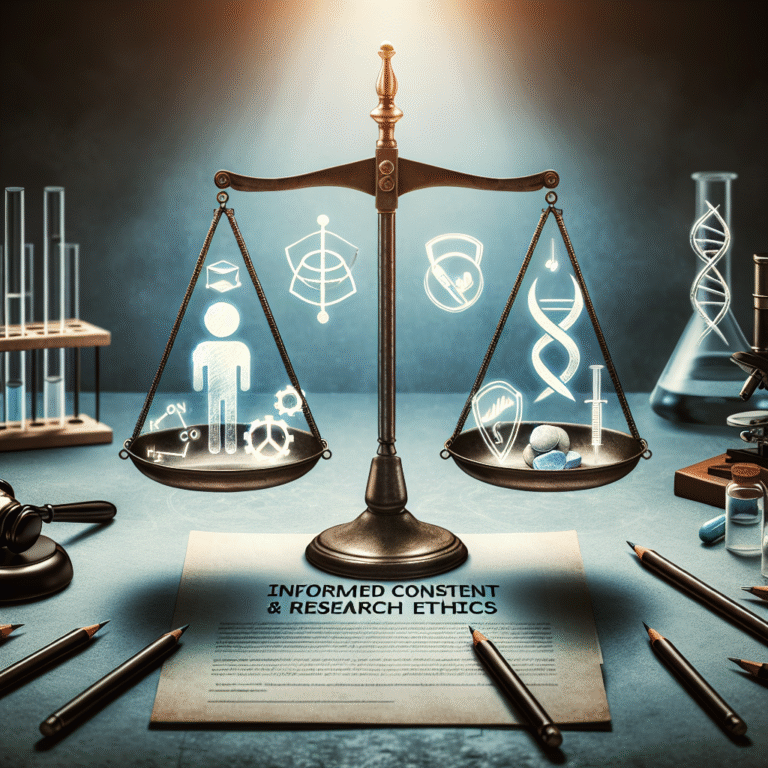
In the realm of quantitative research, understanding statistical significance is not just beneficial; it is essential. When researchers embark on their projects with hypotheses in hand and datasets at the ready, the ability to discern what their findings mean in a statistically significant way separates groundbreaking studies from mere speculation. This article delves deep into statistical significance, exploring its definition, importance, and implications through logical analysis and real-world examples, thereby providing an ultimate understanding of statistical significance: what it means and why it matters in quantitative research.
Introduction: The Power of Knowing What Your Data Mean
Imagine you’ve conducted a study to determine whether a new teaching method improves student performance. You gather your data, perform your analysis, and find that students taught with this method scored slightly higher than those who used traditional methods. But how do you know whether this difference is a real effect or just a result of random chance? This is where statistical significance comes into play.
Statistical significance answers critical questions in research, guiding decisions that could affect educational policies, medical practices, and even technological advancements. It’s the difference between observing a true phenomenon and falling victim to coincidence.
In this article, we’ll discuss statistical significance: what it means and why it matters in quantitative research in a detailed manner, supported by case studies, charts, and actionable insights that ensure you leave equipped with a comprehensive understanding.
What is Statistical Significance?
At its core, statistical significance is a measure of whether the results of your study are likely to be attributed to something other than random chance. It typically involves calculating a p-value, which indicates the probability of observing your results (or more extreme results) if the null hypothesis is true. A common threshold for declaring statistical significance is a p-value of less than 0.05.
The Null and Alternative Hypotheses
To understand statistical significance fully, it’s essential to distinguish between the null hypothesis (H₀) and the alternative hypothesis (H₁):
- Null Hypothesis (H₀): This hypothesis states that there is no effect or no difference; any observed effect is due to chance.
- Alternative Hypothesis (H₁): This hypothesis posits that there is a true effect or difference.
When we calculate the p-value, we essentially test the strength of evidence against the null hypothesis, using it as a baseline.
Why is Statistical Significance Important?
Statistical significance is crucial for several reasons:
Guides Research Decisions: It helps researchers determine whether their findings warrant further investigation or if they should revise their theories.
Informs Policy and Practice: In fields like medicine and education, the implications of research findings can affect practices on a large scale. Decisions based on statistically significant evidence are more likely to yield positive outcomes.
- Enhances Credibility: Research that demonstrates statistical significance is viewed as more credible. This credibility influences funding, publication, and the acceptance of research findings by the wider community.
Case Study: The Effect of a New Drug
In a clinical trial, researchers tested a new medication aimed at lowering blood pressure. They found that patients taking the drug had an average decrease of 10 mmHg compared to those on a placebo group. The p-value was calculated at 0.03—indicating statistical significance.
This result reassured healthcare professionals that the drug had a genuine effect, influencing its approval and subsequent inclusion in treatment guidelines.
How to Interpret Statistical Significance
Interpreting the p-value is not always straightforward. A p-value of 0.05 means there is a 5% chance of observing results as extreme as the ones found if the null hypothesis were true. However, mistaking statistical significance for practical significance can lead to dangerous misinterpretations.
Practical vs. Statistical Significance
While statistical significance assesses the likelihood that an observed effect is real, practical significance questions whether that effect is meaningful in a real-world context. For instance, if a weight loss drug leads to a statistically significant loss of 0.5 kg versus a placebo, that might not be practically significant in terms of health outcomes.
Common Misunderstandings About Statistical Significance
Misconception 1: A High p-value Means No Effect
A p-value greater than 0.05 doesn’t confirm that the null hypothesis is true; it simply means there’s not enough evidence to reject it.
Misconception 2: Significance Implies Importance
Statistical significance should not be confused with substantive importance. Results may be statistically significant but trivial in their practical application.
The Role of Sample Size
The sample size plays a pivotal role in determining the statistical significance of a study. Larger sample sizes generally provide more reliable results.
The Power of the Test
The statistical power of a test—the probability of correctly rejecting the null hypothesis—increases with sample size. Researchers should conduct power analyses before collecting data to ensure their studies are adequately powered to detect meaningful effects.
Visualizing Statistical Significance
Utilizing visual tools can enhance understanding. Below is a simple representation of significance testing:
| P-Value Range | Decision |
|---|---|
| Less than 0.01 | Strong evidence against H₀ |
| 0.01 to 0.05 | Moderate evidence against H₀ |
| 0.05 to 0.10 | Weak evidence against H₀ |
| Greater than 0.10 | Insufficient evidence against H₀ |
Enhancing Statistical Significance: Best Practices
1. Improve Study Design
A well-designed study minimizes bias and enhances the validity of your results. Use randomization, control groups, and blinding to improve the reliability of your findings.
2. Increase Sample Size
By utilizing adequate sample sizes, you can minimize the error and achieve more reliable and statistically significant results.
3. Conduct Pre-Registration
Pre-registering your study helps avoid biases in data analysis and strengthens the credibility of your results.
Statistical Significance in Real-World Applications
Case Study: Educational Interventions
In an educational study, researchers examined the impact of a new reading program. They measured student performance using standardized tests. With a p-value of 0.04, the study concluded that the new program improved literacy rates over a traditional curriculum.
This finding led to the program’s adoption in schools, demonstrating how statistical significance informs educational practices.
Case Study: Public Health Research
A public health research team evaluated the relationship between exercise frequency and mental health outcomes. With a sample size of 2,000 participants and a p-value of 0.01, the study found statistically significant benefits associated with regular physical activity—findings that prompted community health initiatives promoting exercise.
Conclusion: Making Sense of Statistical Significance
Statistical significance: what it means and why it matters in quantitative research isn’t merely an academic discussion; it’s a conversation about the integrity of science and the applicability of research findings in real life. As researchers, understanding and effectively communicating statistical significance is crucial.
By honing your skills in selecting appropriate statistical tests, interpreting p-values, and distinguishing between statistical and practical significance, you become a more influential contributor in your field—one who can interpret data with authority and impact.
Call to Action
Are you ready to take your understanding of statistical significance to the next level? Begin applying these concepts today in your research. The next time you analyze data, remember that every number tells a story, and understanding that narrative can elevate your research to new heights.
FAQs About Statistical Significance
1. What is a p-value?
A p-value measures the probability of observing results as extreme as yours if the null hypothesis is true. A lower p-value indicates stronger evidence against the null hypothesis.
2. What does it mean if a result is statistically significant?
It means that the observed effect is likely not due to chance, suggesting that there is genuine difference or effect.
3. Is a p-value of 0.05 always the threshold for significance?
Not always. While 0.05 is a common standard, some fields use stricter thresholds like 0.01, depending on the context and consequences of the results.
4. What are Type I and Type II errors?
A Type I error occurs when the null hypothesis is incorrectly rejected (false positive), while a Type II error happens when the null hypothesis is not rejected when it is false (false negative).
5. How can I improve the statistical power of my study?
You can increase sample size, ensure appropriate study design, and conduct a power analysis before starting your research.
Understanding statistical significance is crucial for researchers, educators, and policy-makers alike. As the landscape of data evolves, a solid grasp of these concepts will empower you to draw meaningful insights from your quantitative research endeavors.
















